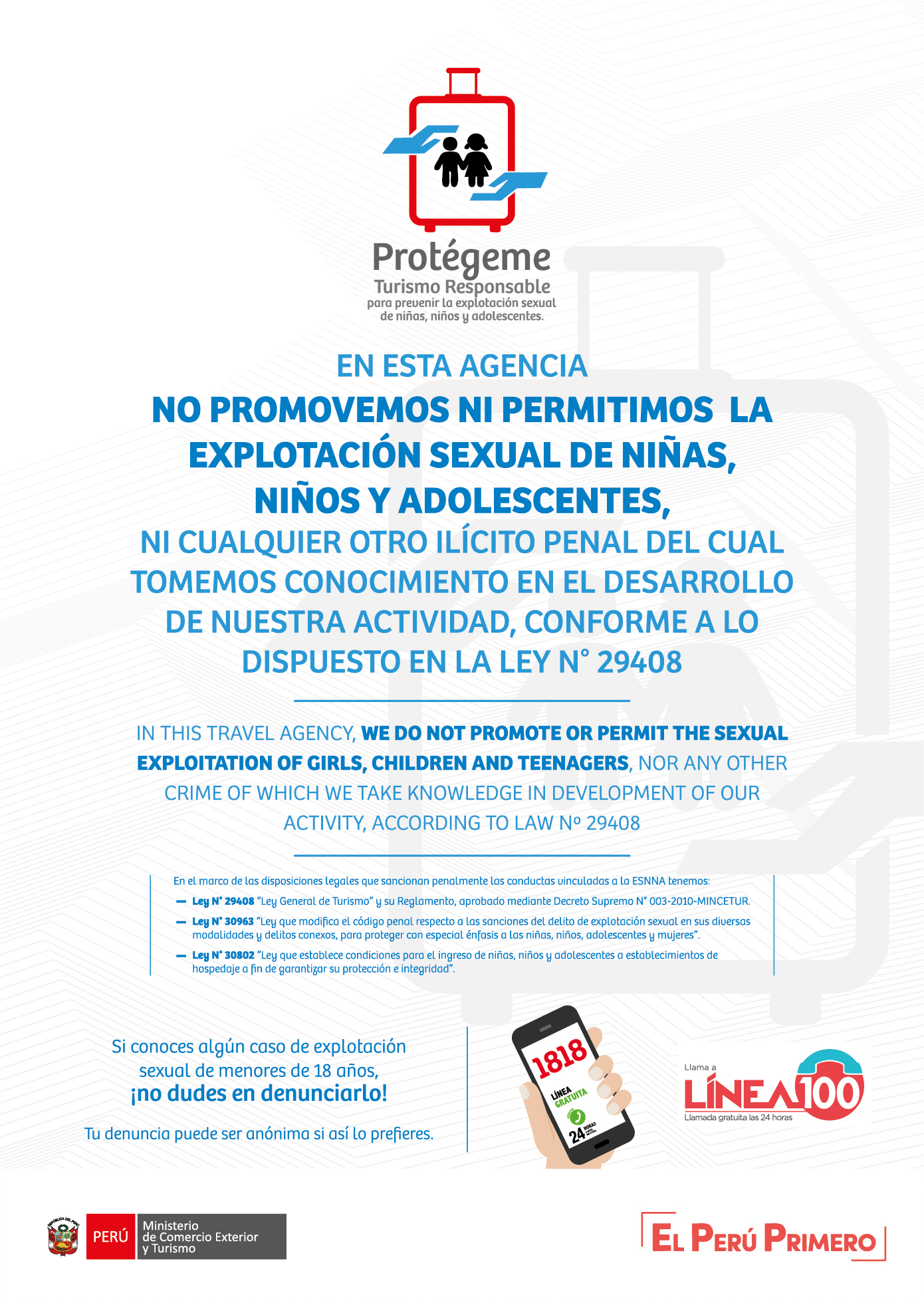Are you still planning your trip to South America? Have you not yet decided which country or countries you will visit?
Peru is a country of memorable experiences, magical places, delicious food and welcoming people. Today we bring you 10 reasons why you must visit Peru.
Of the 117 life zones on the planet, 84 are found in Peru, making it one of the most biodiverse countries in the world. These include cold and tropical seas, deserts, rainforests, and more, that allow the development of outdoor activities such as trekking, climbing, mountain biking, surfing, and more.
Due to the diversity of life zones, Peru is home to a large number of species of fauna, such as birds, mammals, reptiles, insects, and fish. Just to mention a few records, Peru is the country with the greatest diversity of birds in the world, and one of the countries with the largest number of butterfly species.
It also has a great diversity of flora, with more than 25,000 species of plants, of which 30% are endemic and represent 10% of the total flora species in the world.
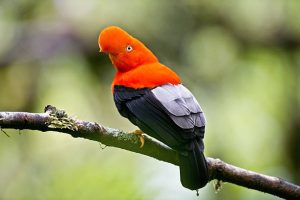
Andean cock of the rock. Photo by webguzs on istockphoto.
The Sacred City of Caral constitutes the oldest civilization in America, with more than five thousand years old, Caral developed at the same time as other great cultures in Mesopotamia, Egypt and China.
This sacred city is located in the middle of the Supe Valley, amid fertile lands close to the sea, and was inhabited by skilled fishermen, farmers and expert seafarers.
Caral was a fully developed socio-political state with a sophisticated urban plan, monumental architecture, and a complex social structure, that influenced nearby settlements and much of the Peruvian coast. Also its farming techniques and sustainable practices remain a reference point to this day.
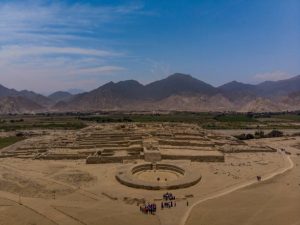
Sacred City of Caral. Photo by Wirestock on istockphoto.
eru is considered the world’s potato heartland, where potatoes were first domesticated; that’s why it has more than 3500 of potato varieties, including native potatoes, white potatoes, and other varieties. Peruvian potatoes are known for their nutritional value and health benefits. They can be eaten boiled, fried, grilled, in stews, with different sauces and as snacks.
Some types of potatoes that we find are; Huayro, White potato, Peru pink potato, Peruanita, Huamantanga, Canchan, Amarilla, Tumbay, Yungay, Tomasa, Perricholi, Negra andina, and more.
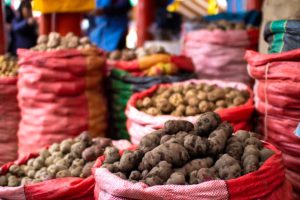
Variety of potatoes in sacks at a local market in Cusco. Photo by Myriam Borzee on istockphoto.
The Amazon River and the Peruvian Amazon Basin are important for their biodiversity, their role in the global climate (helping to maintain the carbon cycle and climate) and their tourist value.
The Amazon Basin is the most biodiverse in the world, as it is home to many aquatic animals, such as dolphins, manatees, catfish and river wolves. As well as many species of plants and animals, some of which are medicinal.
This territory gives us the opportunity to enjoy nature and observe the diversity of flora and fauna that the Amazon gives us. Allowing us to take eco-tourist excursions, such as hiking, flora and fauna observation, staying in lodges in the middle of the jungle, and outdoor activities; contributing to its preservation and development, through public and private initiatives, which empower local communities.
If you want to live and feel the essence of the Peruvian Amazon, and at the same time collaborate with the preservation of the Amazon; You must visit Loreto, a tourist destination that has a varied offer of lodges committed to responsible tourism, authentic excursions in the jungle and the opportunity to interact with native communities.
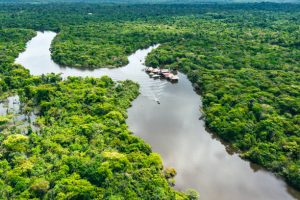
Aerial view of the Amazon River in Peru. Photo by mariusz_prusaczyk on istockphoto.
Lake Titicaca is the world’s highest navigable lake, this means that it is the highest lake that boats can use for trade. It sits at an elevation of 12,507 ft (3,812 m) above sea level in the Andes Mountains, and covers 3,232 sq mi (8,372 km2)
Located in the Andes Mountains of South America, straddles the border between Peru and Bolivia. It is home to a diverse variety of fauna, including the Titicaca water frog and the Andean fox. Despite this, the lake’s cold, salty, and low-oxygen waters make it challenging for aquatic life to survive and reproduce.
On the Peruvian side of Lake Titicaca we find the famous Uros Floating Islands, which are made of dried Totora reeds. In addition, we find other islands such as Taquile, Amantani, Llachón, among others, which await ancestral customs and techniques that they share with travelers who wish to feel the living culture of these towns, surrounded by a unique and magical landscape.
Unfortunately, the water level of Lake Titicaca is falling, which affects fishing, agriculture and tourism, so our visit must contribute to its care and conservation.
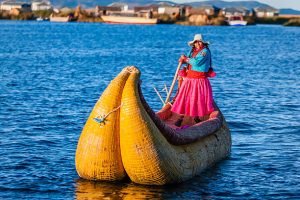
Peruvian woman sailing on a totora boat. Photo by hadynyah istockphoto.
The culinary richness of Peru is based on the diversity of native products, ancestral techniques and recipes, and the influence of cultures such as African, Spanish, Asian, among others.
Among the emblematic dishes of Peruvian cuisine, we find ceviche, lomo saltado, ají de gallina, rocoto relleno, pachamanca, among others. The varied Peruvian gastronomy extends to desserts and drinks such as chicha morada and pisco sour.
In Peru we will find a wide range of renowned restaurants and are considered among the best in the world, such as Central, Maido and Astrid y Gastón. In addition, we find other traditional establishments with great history, which ensure an excellent gastronomic experience.

Main typical dishes of Peru. Photo by Tomas Llamas Quintas on istockphoto.
Peru offers us authentic cultural experiences throughout the country, as in every place we will find customs, techniques, vestiges, monuments, archaeological sites and cultural manifestations that take us back to pre-Hispanic and colonial times, all the way to the Republic.
Among the most important destinations we have Cusco, a region that stands out for the existence of incredible archaeological monuments that show us the immensity and great development of the Inca empire, with Machu Picchu being the most emblematic sanctuary and considered a world wonder. We also find towns that keep their cultures alive, and they await us with open arms to share with us.
In the Puno region we find important archaeological monuments of the Pucará and Tiahuanaco cultures, in addition to being the “Capital of Peruvian Folklore”. There are also ancestral towns along Lake Titicaca. Likewise, in Arequipa, we can live authentic experiences in the Colca Valley.
In the north of Peru, Chan Chan is located, considered the largest clay citadel in the world, built by the Chimú civilization. In the south of the country we find the enigmatic Nazca lines, and in Lima the architectural beauty and historical legacy of the colonial era stands out.
Throughout the Amazon we find native peoples who await ancestral customs and techniques that range from daily and artistic activities to knowledge about natural medicine.
Wherever you go, Peru will surprise you with its great archaeological monuments, dances, knowledge, beliefs and ancestral techniques reflected in its textiles, crafts, and clothing.
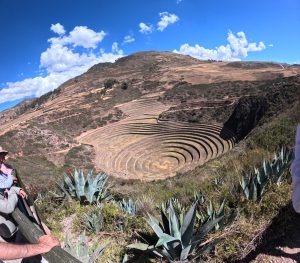
Circular terraces of Moray in Cusco. Photo by AC Viajes Perú.
Countless paths to travel and magical places to discover. Do not miss the news we have for you about our trips and destinations. 😉


